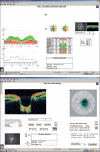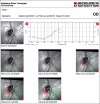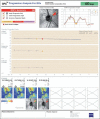Role of imaging in glaucoma diagnosis and follow-up
- PMID: 21150036
- PMCID: PMC3038504
- DOI: 10.4103/0301-4738.73696
Role of imaging in glaucoma diagnosis and follow-up
Abstract
The purpose of the review is to provide an update on the role of imaging devices in the diagnosis and follow-up of glaucoma with an emphasis on techniques for detecting glaucomatous progression and the newer spectral domain optical coherence tomography instruments. Imaging instruments provide objective quantitative measures of the optic disc and the retinal nerve fiber layer and are increasingly utilized in clinical practice. This review will summarize the recent enhancements in confocal scanning laser ophthalmoscopy, scanning laser polarimetry, and optical coherence tomography with an emphasis on how to utilize these techniques to manage glaucoma patients and highlight the strengths and limitations of each technology. In addition, this review will briefly describe the sophisticated data analysis strategies that are now available to detect glaucomatous change overtime.
Conflict of interest statement
Figures







References
-
- Fayers T, Strouthidis NG, Garway-Heath DF. Monitoring glaucomatous progression using a novel Heidelberg Retina Tomograph event analysis. Ophthalmology. 2007;114:1973–80. - PubMed
-
- Artes PH, Chauhan BC. Longitudinal changes in the visual field and optic disc in glaucoma. Prog Retin Eye Res. 2005;24:333–54. - PubMed
-
- Chauhan BC, Blanchard JW, Hamilton DC, LeBlanc RP. Technique for detecting serial topographic changes in the optic disc and peripapillary retina using scanning laser tomography. Invest Ophthalmol Vis Sci. 2000;41:775–82. - PubMed
-
- Chauhan BC, Hutchison DM, Artes PH, Caprioli J, Jonas JB, Leblanc RP, et al. Optic Disc Progression in Glaucoma. Comparison of Confocal Scanning Laser Tomography to Optic Disc Photographs in a Prospective Study. Invest Ophthalmol Vis Sci. 2008;50:1682–91. - PubMed
MeSH terms
Grants and funding
LinkOut - more resources
Full Text Sources
Medical

